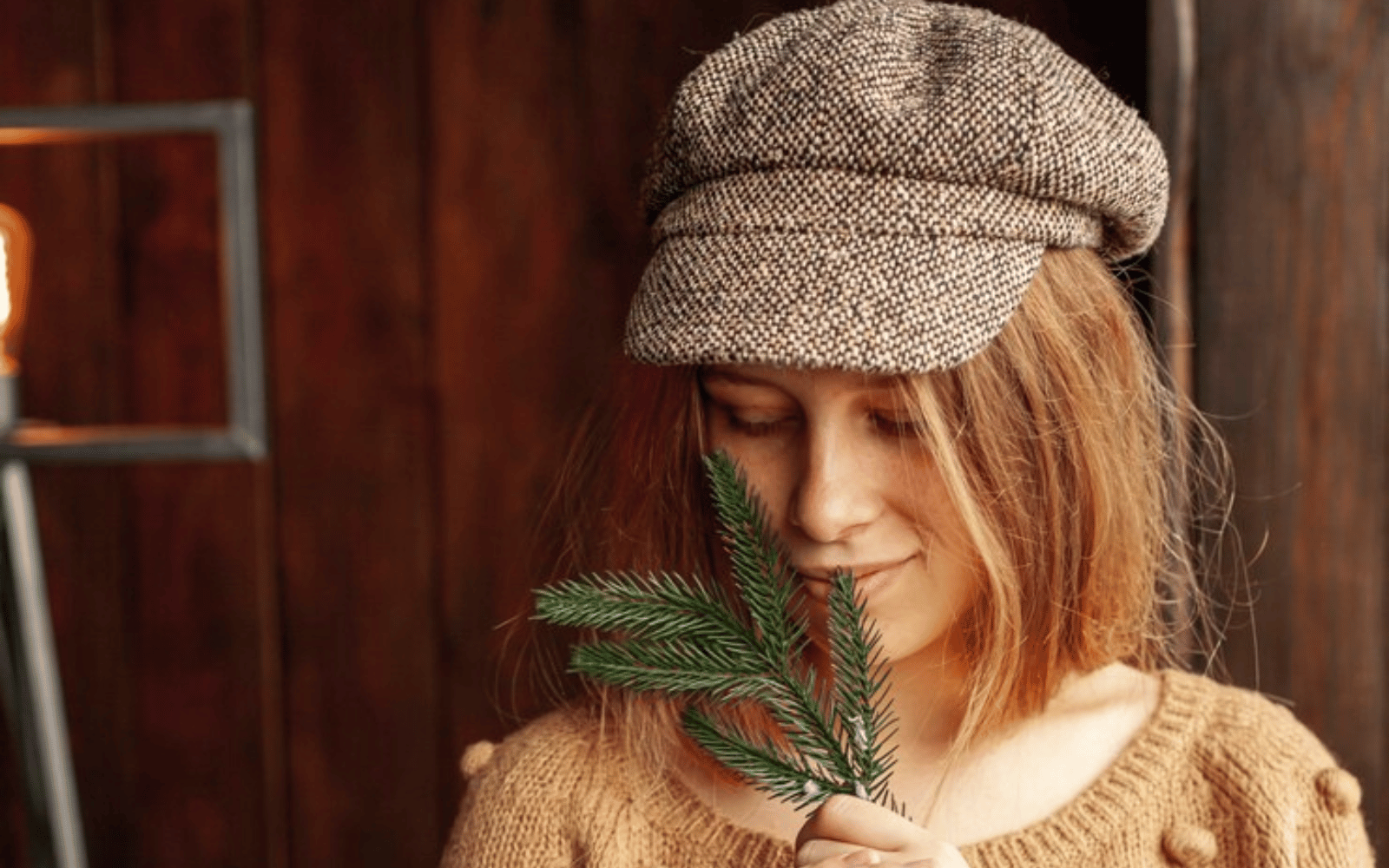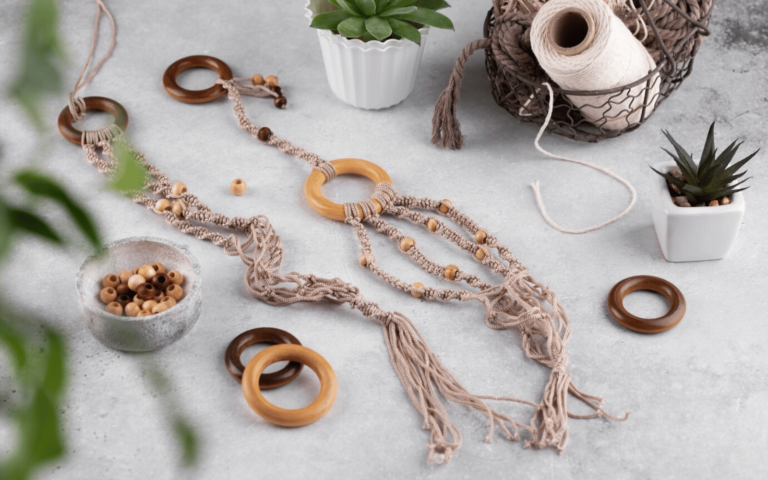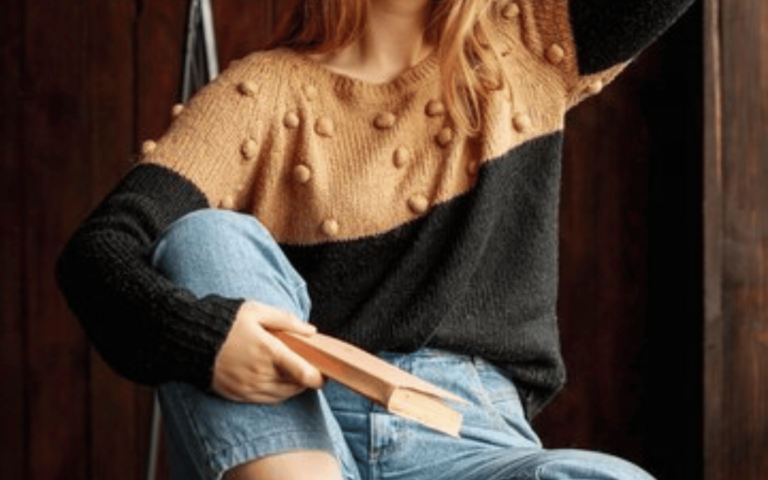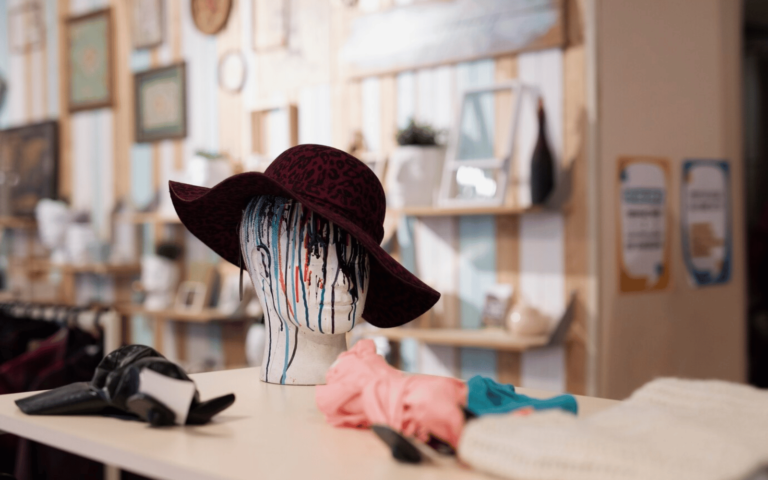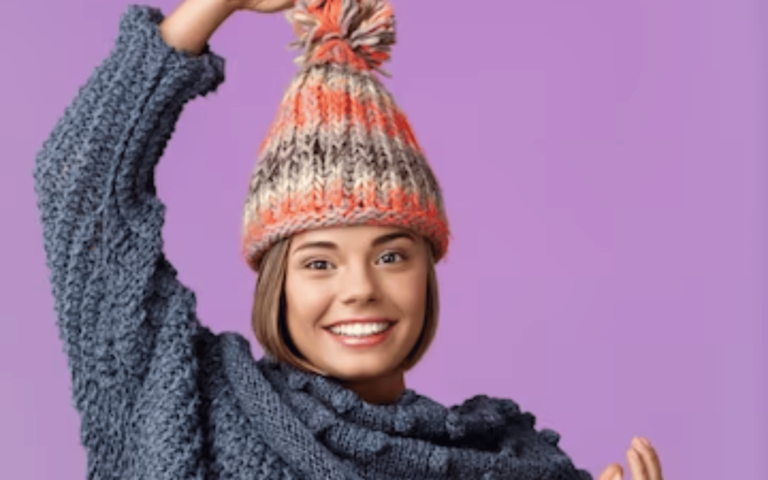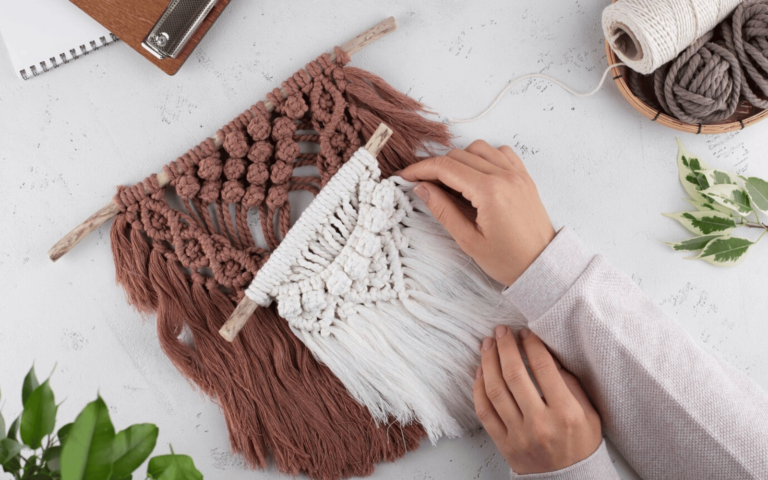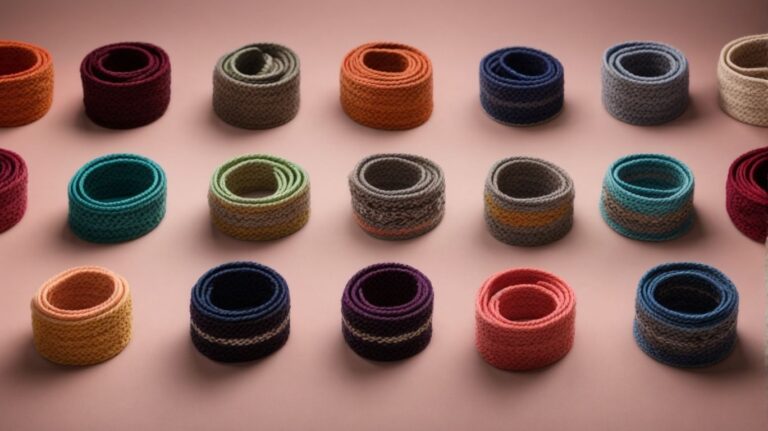Loom Knit Hats – Crafting New 2024 Stylish and Headwear for All Ages
Loom knit hats have a rich history, tracing back to traditional knitting techniques while embracing modern styles and needs. This crafting method has seen a resurgence in popularity due to its simplicity and the unique, cozy hats it produces. Herein, we delve into the world of loom knit hats, offering insights for beginners and seasoned knitters alike.
Loom knitting, unlike traditional knitting, uses a loom instead of needles, making it more accessible and often easier for beginners. The loom’s structure allows for the creation of hats of various sizes, perfect for people of all ages. From tiny newborn caps to stylish adult beanies, loom knitting offers a range of possibilities.
The appeal of loom knit hats lies not just in their aesthetic charm but also in the personal touch they bring. Each hat, woven on a loom, tells a story of attention and craftsmanship. Whether you’re a beginner looking to start a new hobby or an experienced knitter seeking new challenges, loom knit hats offer something for everyone. This article aims to guide you through the nuances of creating loom knit hats. From selecting the right materials to advanced techniques, we cover all aspects to help you create beautiful hats for people of all ages.
Essentials of Loom Knitting for Beginners
Embarking on your loom knitting journey begins with understanding the basics. Loom knitting, while simpler than needle knitting, requires some fundamental knowledge. The first step is familiarizing yourself with different sorts of looms. Round looms are commonly used for hats, and they come in various sizes to accommodate different head sizes.
The choice of yarn is in loom knitting. For hats, you need a yarn that’s comfortable against the skin, warm, and durable. Acrylic, wool, and cotton blends are popular choices. The yarn thickness should match your loom’s gauge for finest results. Remember, the yarn’s texture and color will define the hat’s final look.
For beginners, it’s important to start with simple patterns. Basic stitches like the e-wrap, knit, and purl are foundational in loom knitting. These stitches can be used to create a variety of textures and patterns. Starting with a basic hat pattern helps you understand these stitches and how they come together to form a finished product. As you progress, experimenting with different yarns and loom sizes will expand your skills. The beauty of loom knitting lies in its adaptability. With a bit of practice, you can create loom knit hats that are not only functional but also stylish and unique.
Guide to Creating Your First Loom Knit Hat
Creating your first loom knit hat can be an exciting venture. The process begins with selecting a loom and yarn. For beginners, a medium-sized round loom and medium-weight yarn are ideal. These provide a good balance between ease of use and versatility. Begin by casting on the yarn to the loom. This involves wrapping the yarn around each peg in a specific pattern. There are several casting on methods, but the e-wrap method is recommended for beginners. It’s simple and provides a stretchy edge, perfect for hats.
Once the yarn is cast on, you’ll start the knitting process. The basic knit stitch is the foundation of loom knitting. It’s created by looping the yarn over the pegs and then lifting the bottom loop over the top loop and off the peg. This process is repeated around the loom until the hat reaches the desired length. Finishing the hat involves removing it from the loom and closing the top. This is typically done by threading a yarn needle through the loops on the loom and then pulling it tight to gather the top of the hat. Finally, weave in any loose ends, and your first loom knit hat is complete!
Designing Loom Knit Hats
When creating loom knit hats, it’s essential to consider both safety and style. Using soft, hypoallergenic yarns ensures the hats are comfortable and non-irritating for sensitive skin. Additionally, ensuring the right size is for a snug and a relief fit. Loom knit hats can be a playground for creativity. Bright colors, playful patterns, and whimsical embellishments like pom-poms or animal ears can make these hats a favorite for kids. Simple stripe patterns or incorporating characters and themes that young people love can make these hats even more special.
For sizing, looms with smaller diameters are ideal for hats. The number of rows knitted will determine the hat’s depth, so it’s important to measure as you go. A good rule of thumb is to create a hat that covers the ears comfortably without being too tight or too loose. Embellishments on hats should be attached to prevent any choking hazards. Adding features like braids, earflaps, or buttons can elevate the design, but always prioritize safety in your design choices. Remember, a well-made hat not only keeps a warm but also adds to their imaginative play.
Fashionable Loom Knit Hats for Teens and Adults
Loom knit hats for teens and adults can be both functional and fashionable. The key is to blend contemporary styles with comfortable designs. For this demographic, consider experimenting with different textures and patterns to create more sophisticated looks. Current trends in loom knit hats include chunky knits, ombre color schemes, and slouchy beanies. These styles can be achieved through various stitches and yarn choices. For instance, using a thick, chunky yarn can add volume and warmth, perfect for winter hats.
In terms of color, neutral tones can provide a versatile option that matches various outfits, while bold or variegated yarns can make a statement piece. Incorporating techniques like cables or lace patterns can add a touch of elegance to your loom knit hats, appealing to a fashion-conscious audience. When designing hats for adults, consider the functionality. A tighter weave provides more warmth, while a looser, more breathable pattern is suitable for milder weather. The versatility of loom knitting allows for creativity in both design and function, making it an excellent choice for crafting trendy, adult hats.
Seasonal Variations in Loom Knit Hats
Loom knit hats can be designed to suit different seasons, making them a year-round crafting project. The key to creating seasonal hats lies in the choice of material and the design of the hat. Lighter yarns like cotton or bamboo blends are perfect for spring and summer, while wool or acrylic are better suited for fall and winter. For summer hats, consider looser weaves and breathable designs. Sun hats with wide brims made on larger round looms can protect from the sun while maintaining a stylish look. Bright colors and lightweight yarns make these hats perfect for warmer weather.
Winter hats, on the other hand, should focus on warmth and comfort. Using thicker yarns and tighter stitches can create hats that retain heat. Incorporating earflaps, longer cuffs, and thicker brims can add extra protection against the cold. Seasonal colors like deep reds, greens, and blues can reflect the winter mood. Holiday-themed hats are also popular. Creating hats with festive patterns, colors, or embellishments can add to the holiday spirit. For instance, a red and white striped hat for Christmas, or a pastel-colored one for Easter, can be fun projects to work on.
Advanced Techniques in Loom Knit Hat Making
For those who have learned the basics of loom knitting, advanced techniques can add complexity and uniqueness to your hats. Incorporating different stitches, such as the purl stitch, rib stitch, or cable stitch, can create intricate patterns and textures. Colorwork in loom knitting can be achieved through techniques like fair isle or intarsia. These techniques allow for the creation of multi-colored patterns, adding a vibrant or sophisticated touch to your hats. However, they require planning and attention to detail.
Blending different yarn sorts within the same hat can create interesting effects. For example, combining a standard wool yarn with a fuzzy novelty yarn can add dimension and a unique tactile feel to your hats. Be mindful of the tension and gauge when mixing yarns to ensure a consistent fit. Achieving a professional finish is important in advanced loom knitting. This includes neat and weaving of ends, consistent tension throughout the hat, and clean transitions between colors or stitches. These details make a significant difference in the overall quality of the finished hat.
The Therapeutic Benefits of Loom Knitting Hats
Loom knitting, particularly hat making, offers more than just a creative outlet; it can be a therapeutic and relaxing activity. The repetitive motion of knitting can be meditative, helping to reduce and. Many find loom knitting to be a soothing hobby that provides a sense of calm and focus. Beyond the individual benefits, loom knitting can foster a sense of community. Joining a knitting group or participating in online forums can connect you with others who share your interest. Sharing patterns, tips, and experiences with fellow knitters can be rewarding and enriching.
Personal stories from loom knitters often highlight how the craft has positively impacted their lives. From overcoming personal challenges to finding a sense of purpose and achievement, the act of creating something with your hands can be incredibly fulfilling. The joy of seeing a project come to fruition, especially one as practical as a hat, is a great motivator. For many, loom knitting hats has become more than just a hobby; it’s a way to unwind, express creativity, and connect with others. Whether you knit for yourself, for loved ones, or for charity, the act of creating something beautiful and functional can be deeply satisfying.
Integrating Eco-Friendly Practices in Loom Knit Hats
In today’s environmentally conscious world, integrating eco-friendly practices into loom knit hats is not only beneficial for the planet but also appealing to many consumers. One way to Maybe carry out this is by using sustainable and recycled materials. Yarns made from organic fibers, recycled fabrics, or sustainable sources like bamboo are great choices.
Another aspect to consider is the durability and quality of the hats. Creating a product that lasts longer reduces waste and promotes sustainable consumption. This means paying attention to the craftsmanship of your hats, ensuring they are not only beautiful but also durable. Promoting environmental awareness through your crafting can also have a broader impact. Sharing information about sustainable practices, choosing eco-friendly packaging for your hats, and even getting involved in environmental initiatives can set a positive example. Your craft can be a platform to encourage others to think about their environmental footprint.
The key is to find a balance between eco-friendliness and functionality. While the materials used are important, the hat still needs to meet the needs of the wearer in terms of comfort, warmth, and style. Striving for this balance can lead to innovative designs and practices in your loom knitting projects.
Simplifying Color and Texture Choices in Loom Knit Hats
Creating a loom knit hat is an enriching activity that offers endless possibilities for customization through the careful selection of colors and textures. When beginning a new project, the choice of yarn can dramatically influence both the appearance and comfort of the finished hat. To ensure a successful outcome, it is essential to consider how different yarns behave and how their unique qualities can enhance your knitting experience.
For those new to loom knitting, it is advisable to start with yarns that are smooth and not too slippery, making them easier to handle. Acrylic yarns are a popular choice due to their wide range of colors and affordable price point. They are durable, easy to care for, and maintain their shape well, making them ideal for everyday wear. Wool yarns, on the other hand, offer natural warmth and breathability, which are perfect for cold weather hats. They come in a variety of textures from soft merino to rustic wool blends, catering to different aesthetic preferences and functional needs.
The color choice is another critical aspect of hat making. While some crafters prefer bold and vibrant colors that make a statement, others might opt for neutral tones that complement a wide range of outfits. Seasonal trends also play a role in color selection; for instance, pastels might dominate spring collections, while rich, earthy tones can be more appealing in autumn. Combining multiple colors in one project allows for personal expression and can add a playful touch to a simple design. Techniques such as stripes, gradients, or color blocking are not only visually striking but can also be used to highlight the unique textural elements of the yarn.
Texture is equally important and can transform a basic hat into a sophisticated piece of wearable art. By choosing a yarn with inherent texture, such as a boucle or a tweed blend, the finished hat will have an organic, tactile quality that adds depth and interest to the weave. For those who enjoy experimenting, mixing smooth and textured yarns within the same project can provide a delightful contrast that is pleasing both to the eye and to the touch.
In addition to yarn selection, the method of loom knitting itself offers a variety of stitches that influence the texture of the hat. Simple stitches like the knit and purl are easy to master and provide a smooth, stretchy fabric ideal for snug-fitting hats. More complex stitches, such as the twisted stockinette or the figure eight, create intricate patterns that are visually appealing and provide a denser, warmer fabric.
Finally, finishing touches such as pom-poms, buttons, or appliques can serve as the final flourish on a loom knit hat. These elements not only add charm but also offer another layer of customization, allowing the knitter to tailor the hat to the recipient’s tastes or the occasion. For instance, a playful animal-themed hat for a child might feature ear-shaped appliques and whimsical buttons for eyes, while a more subdued adult hat might include a sleek, faux leather tag as a signature detail.
By considering these aspects of color and texture, anyone can create a loom knit hat that is not only stylish and functional but also a true reflection of the maker’s creativity and skill. As this craft continues to gain popularity, more individuals are discovering the joy of making and wearing their own uniquely designed headwear, suitable for all ages and occasions. Whether you are knitting a hat for yourself, a loved one, or as part of a community knitting project, the process is a rewarding one that yields tangible results and a sense of accomplishment.
Outcome: The Everlasting Appeal of Loom Knit Hats
Loom knit hats have a timeless charm that resonates with people of all ages. Through this article, we’ve saw the various aspects of creating these hats, from beginner techniques to advanced designs, and the joys of sharing them with others. Loom knitting offers a unique blend of creativity, practicality, and community.
As we conclude, it’s clear that the world of loom knit hats is vast and varied. Whether you’re knitting for personal enjoyment, gifting, selling, or donating, each hat you create is a testament to your skill and creativity. The process of turning yarn into a functional and beautiful item is truly rewarding.
The future of loom knitting looks bright, with new techniques, materials, and ideas constantly emerging. As you continue on your loom knitting journey, remember that each stitch is a part of a larger tapestry of crafters who share your passion. Loom knit hats are more than just accessories; they’re a symbol of attention, skill, and creativity.
See More At: woolen8wonders.com

